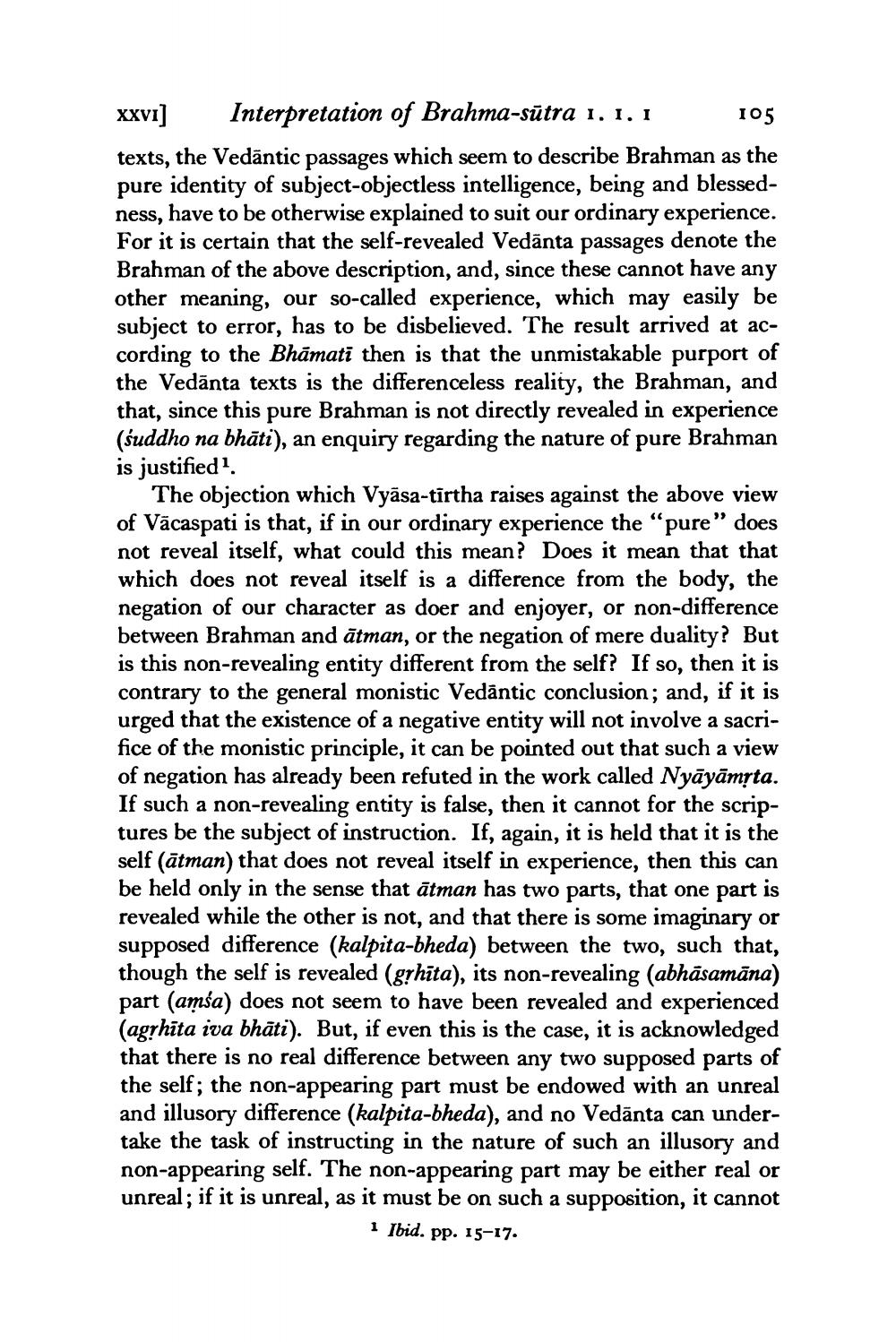________________
XXVI] Interpretation of Brahma-sūtra 1. 1. 1 105 texts, the Vedāntic passages which seem to describe Brahman as the pure identity of subject-objectless intelligence, being and blessedness, have to be otherwise explained to suit our ordinary experience. For it is certain that the self-revealed Vedānta passages denote the Brahman of the above description, and, since these cannot have any other meaning, our so-called experience, which may easily be subject to error, has to be disbelieved. The result arrived at according to the Bhāmatī then is that the unmistakable purport of the Vedānta texts is the differenceless reality, the Brahman, and that, since this pure Brahman is not directly revealed in experience (suddho na bhāti), an enquiry regarding the nature of pure Brahman is justified.
The objection which Vyāsa-tirtha raises against the above view of Vācaspati is that, if in our ordinary experience the "pure" does
ot reveal itself, what could this mean? Does it mean that that which does not reveal itself is a difference from the body, the
our character as doer and enjoyer, or non-difference between Brahman and ātman, or the negation of mere duality? But is this non-revealing entity different from the self? If so, then it is contrary to the general monistic Vedāntic conclusion; and, if it is urged that the existence of a negative entity will not involve a sacrifice of the monistic principle, it can be pointed out that such a view of negation has already been refuted in the work called Nyāyāmṛta. If such a non-revealing entity is false, then it cannot for the scriptures be the subject of instruction. If, again, it is held that it is the self (ātman) that does not reveal itself in experience, then this can be held only in the sense that ātman has two parts, that one part is revealed while the other is not, and that there is some imaginary or supposed difference (kalpita-bheda) between the two, such that, though the self is revealed (grhīta), its non-revealing (abhāsamāna) part (amśa) does not seem to have been revealed and experienced (agrhita iva bhāti). But, if even this is the case, it is acknowledged that there is no real difference between any two supposed parts of the self; the non-appearing part must be endowed with an unreal and illusory difference (kalpita-bheda), and no Vedānta can undertake the task of instructing in the nature of such an illusory and non-appearing self. The non-appearing part may be either real or unreal; if it is unreal, as it must be on such a supposition, it cannot
1 Ibid. pp. 15-17.




